 Crime
Crime  Crime
Crime  Movies and TV
Movies and TV 10 Wildly Different Movie Takes on Nuclear War
 Creepy
Creepy 10 Places Where Folklore Is Alive and Well
 History
History 10 Events That Unexpectedly Changed American Life
 Pop Culture
Pop Culture 10 Cases of Grabbing Defeat from the Jaws of Victory
 History
History 10 Common Misconceptions About the Renaissance
 Weird Stuff
Weird Stuff 10 Crazy Things Resulting from Hidden Contract Provisions
 Facts
Facts 10 Unusual Facts About Calories
 Weird Stuff
Weird Stuff 10 Days of Humiliation When the Person Should Have Stayed in Bed
 Humans
Humans 10 Surprising Ways Game Theory Rules Your Daily Life
 Crime
Crime 10 Truly Evil People Who Used Halloween as the Perfect Cover
 Movies and TV
Movies and TV 10 Wildly Different Movie Takes on Nuclear War
 Creepy
Creepy 10 Places Where Folklore Is Alive and Well
Who's Behind Listverse?

Jamie Frater
Head Editor
Jamie founded Listverse due to an insatiable desire to share fascinating, obscure, and bizarre facts. He has been a guest speaker on numerous national radio and television stations and is a five time published author.
More About Us History
History 10 Events That Unexpectedly Changed American Life
 Pop Culture
Pop Culture 10 Cases of Grabbing Defeat from the Jaws of Victory
 History
History 10 Common Misconceptions About the Renaissance
 Weird Stuff
Weird Stuff 10 Crazy Things Resulting from Hidden Contract Provisions
 Facts
Facts 10 Unusual Facts About Calories
 Weird Stuff
Weird Stuff 10 Days of Humiliation When the Person Should Have Stayed in Bed
 Humans
Humans 10 Surprising Ways Game Theory Rules Your Daily Life
10 Failed Attempts To Create New US States
American readers probably remember the “50 Nifty United States” song from elementary school. But just imagine how much worse that song would be with the addition of “Franklin” or “the Trans-Oconee Republic.” And that’s just the tip of the iceberg—American history is filled with dozens of short-lived states, republics, and at least one theocratic island-kingdom.
10The State Of Franklin
Wars are expensive and the first thing the United States of America dealt with after achieving independence was crushing debt. In 1784, North Carolina came up with a devious plan to cut its own expenses by ceding 29 million acres of wilderness to the federal government.
The move came as a surprise to the residents of the aforementioned wilderness, who were worried that the federal government might sell the land to a foreign power to earn some quick cash. Furthermore, they were already isolated from the population centers of North Carolina and had long felt that the state government was out of touch with their needs.
So, on August 23, 1784, the four western counties of Sullivan, Spencer, Washington, and Greene voted unanimously to secede from North Carolina and create their own state. They sent a petition to Philadelphia, then the US capital, proposing statehood under the name Frankland (the name would eventually be changed to Franklin in a doomed effort to get Benjamin Franklin on board with the plan). Seven states voted in favor of the State of Franklin, but that was just shy of the two-thirds majority required.
Undeterred, the Frankliners simply started operating as an independent country. From their capital at Greenville they opened courts, appointed officials, and organized a barter-based economy (their governor was given a salary of 1,000 deer hides per year). Meanwhile, a new government in North Carolina had claimed all the land back. In 1788, North Carolina arrested Franklin’s governor. The Frankliners immediately sent an armed posse to break him out of jail, but their leaders had already realized the situation was untenable. In 1789, they agreed to rejoin North Carolina. The situation didn’t last long—Franklin would eventually form the core of the new state of Tennessee.
9The State Of McDonald

The annual release of the Family Vacationland Map is usually a fairly non-controversial event. But in 1961, the Missouri State Highway Commission ignited a short-lived revolt when it neglected to include McDonald County on the map. McDonald County, located in the extreme southwestern corner of the state, was home to popular tourist destinations that would certainly suffer from being left off a widely distributed map.
Almost immediately after the snub, McDonald County voted to secede from the state of Missouri and set up its own independent government. A local militia was formed and all cars entering the county were stopped and given special tourist visas if operated by non-McDonald residents. The new entity even printed its own stamps, which are now highly prized by stamp collectors. Things got to the point that Missouri Supreme Court Justice Mary Russell had to drive down to McDonald County to settle the feud.
In a public speech, Justice Russell begged McDonald County to reconsider their secession: “We need McDonald County in this state. You are so very important, you are a beautiful county.” At the end of her speech a local asked if McDonald was back on the map and Russell replied affirmatively. And with that the beef was quashed and at least seven new people heard about southwestern Missouri.
8The Watauga Association
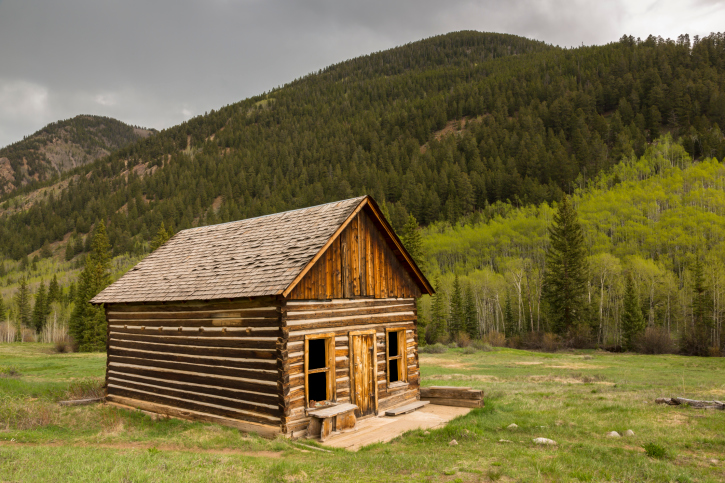
An oft-neglected piece of American history is the Watauga Association of what is now Tennessee. This semi-autonomous state was formed in 1772, three years before the American Revolution officially began, by settlers along the Watauga River. This area lay just outside of North Carolina’s territory, on land belonging to the Cherokee nation. As such, the British government ordered the settlers to move back inside North Carolina. But the settlers, dissatisfied with the distant control of colonial government, instead negotiated with the Cherokee to lease the area for a period of 10 years.
When the Cherokee agreed, the settlers formed their own government, led by five elected magistrates. While the Watauga Association never formally claimed independence from Britain, it was clearly outside of British or American control, and was therefore the first independent non–Native American government on the continent. The Association was bound by the first written constitution in North America, a historically significant achievement
Naturally, such independent action drew the ire of the British administration, but they were slow to react, and failed to do anything about the situation before the Revolution broke out. For the first few months of the war, the Watauga Association formed its own militia and defended itself. However, the Cherokee had allied with the British and also realized the deals they made with the Wataugans were not legally binding. An attack seemed imminent, forcing the exposed settlers to ask North Carolina to absorb their territory. Theodore Roosevelt later wrote that the Watauga Association was the first true manifestation of colonial independence.
7Rough And Ready, California

Some of the most momentous decisions in history have been made while drunk, and the secession of Rough and Ready, California seems to have been no exception. The townsfolk, almost all miners from Wisconsin, had grown sick of government intervention in their affairs—they were particularly angry over a new federal mining tax. On April 7, 1850, they got together and declared independence, pledging “to form peacefully, if we can, and forcibly, if we must, THE GREAT REPUBLIC OF ROUGH AND READY!”
As an independent people, the Rough and Readied (?) abolished all mining taxes and lived lavishly. But the honeymoon was short-lived, and only three months later the Rough and Readied realized their horrible mistake. On the 4th of July, swept up in a patriotic frenzy, they reneged on their secession attempt and rejoined California. But patriotism aside, there might have been some practical considerations to the decision—rumor has it that saloons in Nevada City had refused to sell liquor to “foreigners.” Either way, the Rough and Readied were proud Americans again, and the local saloons happily continued serving alcohol to miners.
6Deseret
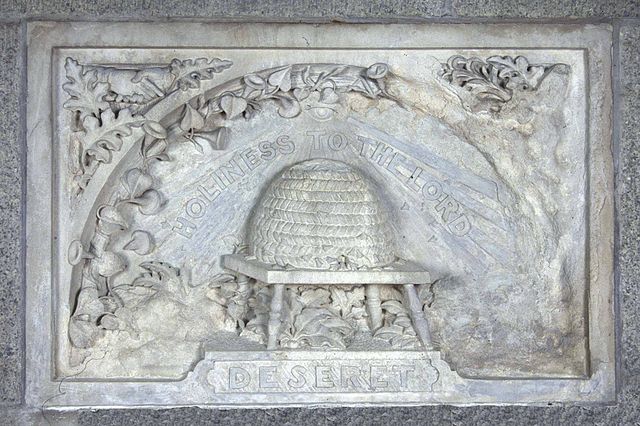
The Church of Jesus Christ of Latter-day Saints had a pretty rough start—Joseph Smith and the first Mormons were violently expelled from Ohio, Illinois, and Iowa before journeying across the continent to settle in Utah, where they eventually came into conflict with the United States Army.
In 1849, amid all that turbulence, Mormon leader Brigham Young sent a petition to Washington, D.C. proposing the titanic State of Deseret (Deseret being a word for “honeybee” used in the Book of Mormon). The proposed state would have covered all of modern-day Nevada and Utah, much of Arizona, and parts of California, New Mexico, Colorado, Idaho, and Oregon.
But politicians in Washington were justifiably unhappy with the Mormon practice of polygamy. Many were also worried about whether slavery would be legal in the new state—a hot-button issue in the years leading up to the Civil War. The sheer size of Deseret also caused concerns that the Mormons were trying to create a massive frontier theocracy. However, as the politicians debated, the Mormons formed their own assembly and spent the next year passing laws in the name of the State of Deseret.
The Assembly of Deseret was dissolved in 1850, when Millard Fillmore compromised and made Brigham Young governor of the much smaller Utah Territory. The arrangement satisfied (almost) everyone, and Utah would eventually become a state itself in 1896.
5Jefferson Territory
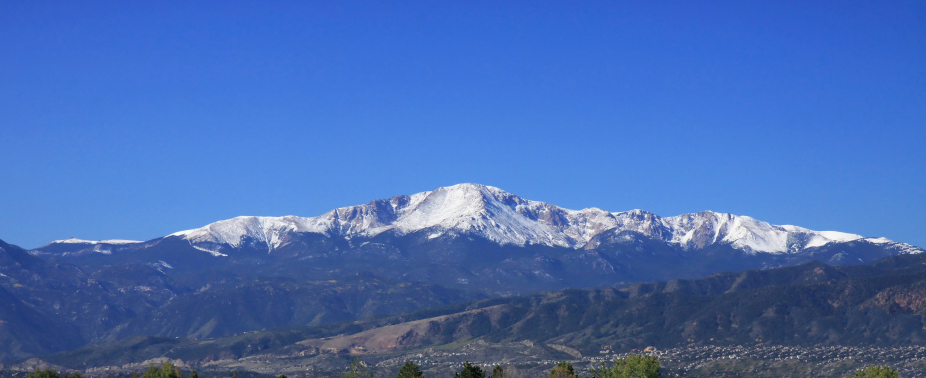
In 1855, Kansas created Arapahoe County, a sprawling entity encompassing most of modern Colorado. The county was aptly named, since at the time it was mainly inhabited by the Arapahoe tribe. But everything changed in 1858, when the Pikes Peak Gold Rush brought thousands of new settlers to the area. The newly arrived miners were unimpressed by the lack of attention the Kansas state government paid to their farflung county, although to be fair Kansas was dealing with its own “Bleeding Kansas” quasi-civil war at the time.
To counter the state government’s indifference, the miners decided to form their own territorial government, dubbed Jefferson Territory. This was completely illegal, since a new territory could only be created by Congress and the President. Nevertheless, the people of Jefferson operated an almost wholly autonomous government for the next 16 months, mostly because the rest of the country was too concerned with the developing American Civil War to immediately address the Jefferson situation. But in 1861, amid fears that the illegal territory might join the Confederacy, the US government created the Colorado Territory, which absorbed the major population centers of Jefferson and adopted almost the same exact constitution.
4Nataqua Territory
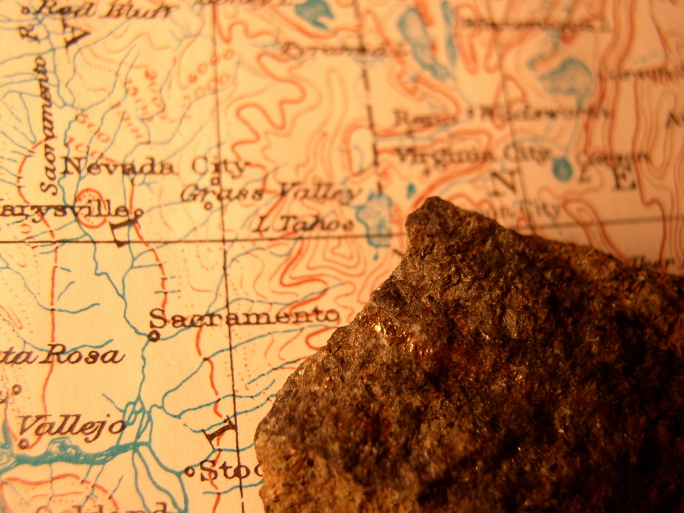
In the mid-19th century, the American West was a chaotic landscape of mining boomtowns, rapid immigration, and ill-defined boundaries. All of these combined to create the unfortunate Nataqua Territory. In 1856, residents of Susanville, a small village in the Honey Lake Valley of Northern California, met to try and work out whether they were part of California or Utah. Neither option was particularly enticing, since Susanville was distant from the administrative centers of both. The Susanvillagers also didn’t want to be ruled by the Mormon hierarchy in Salt Lake City, while the town was cut off from California by the Sierra Nevada mountain range.
Naturally, the locals solved the problem by forming their own territory, dubbed Nataqua. This new territory included around a quarter of modern Nevada and parts of California. The only problem? Susanville was accidentally not included in the Nataqua Territory—due to poor map-reading skills the town was actually several miles outside of the proposed borders.
Things actually got worse after the Nevada territory was created out of the western part of Utah. Again, the boundaries were unclear, and now both California and Nevada claimed Susanville as their own—which was disastrous for the residents, who now found themselves being taxed twice (as a bonus, they also got to vote in elections in both states). The situation was untenable, and in 1852 a low-level conflict called “the Sagebrush War” broke out between the residents and various state officials.
A surprisingly friendly conflict (at one stage an armed confrontation was defused when a local woman made everyone dinner instead), the Sagebrush War still rumbled on for two years. The climax came when a 100-strong posse from California besieged Nataqua “Governor” Peter Roop in his cabin. The siege continued for most of the day, until someone was shot in the leg, at which point everyone seemed to come to their senses and agreed to go for a drink. Nataqua became part of Lassen County, California and hopefully local map-reading skills have subsequently improved.
3The Trans-Oconee Republic
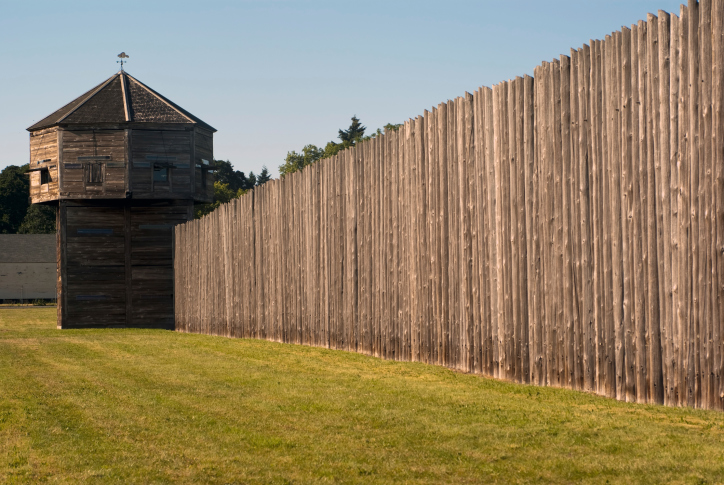
No one likes being double-crossed, especially when the perpetrator is the federal government. But to Elijah Clarke, a Georgian hero of the Revolutionary War, the government had done just that.
Clarke believed that he and his fellow Georgians were given the short end of the stick by the 1790 Treaty of New York, which ended Georgia’s expansion westward and returned land to the Creek tribe. The infuriated Clarke raised an army to invade Spanish Florida, but that venture quickly fell through. Instead, Clarke decided to use the troops he had raised to reclaim the territory lost to the Creek. With his militiamen behind him, Clarke set up his own government, dubbed the Trans-Oconee Republic, and built a series of forts to protect his new country.
George Washington saw the danger an independent republic posed to the fledgling United States and urged the Governor of Georgia, George Mathews, to put an end to it. The problem was that Clarke was incredibly popular in Georgia and all Mathews could muster was a half-hearted proclamation, which was widely ignored.
Mathews was only saved by George Walton, one of Georgia’s signatories to the Declaration of Independence. Once Walton eloquently demonstrated the illegality of Clark’s action, public opinion turned, and Mathews was able to raise 1,200 militiamen to invade the new republic. Clarke’s men quickly abandoned him after the Georgians promised them a full amnesty, and the Trans-Oconee Republic’s short existence was quickly brought to an end.
2The State Of Scott

History often paints the South’s secession from the Union as a unanimous decision. But the truth was often different, as impoverished rural whites owned few slaves and had little in common with wealthy plantation owners. This was especially true in Scott County, a sparsely populated region on Tennessee’s northern border.
The poor tenant farmers of Scott County were unable to afford slaves and disagreed vehemently with Tennessee’s decision to secede from the Union on June 4, 1861. Scott County’s dissension was led by future President Andrew Johnson, who delivered a fiery speech on the issue at the county seat of Huntsville. Johnson’s speech eventually spurred the residents of Scott County to issue a proclamation seceding from Tennessee and rejoining the Union as “the Free and Independent State of Scott.”
The rest of Tennessee took little interest in the rural region’s politicking, but the new state did become the scene of a vicious guerrilla war, as Confederate irregulars attempted to reassert their control over the recalcitrant county.
Although the “State of Scott” never really achieved independence, it’s interesting to note that Scott County did not formally petition to re-enter Tennessee until 1986, 125 years later. In an honorary ceremony, the Tennessee government accepted Scott County’s petition to become the 95th county of Tennessee and the “Free and Independent State of Scott” was officially no more.
1Beaver Island

In contrast to all the failed attempts at statehood there is the weirdly successful monarchy created by James Strang on Beaver Island in Lake Michigan. After failing to become a lawyer, Strang converted to Mormonism in 1844 and began a new life as a preacher. His big moment came in 1848, after Mormonism’s founder, Joseph Smith, was assassinated and the Mormon community searched for a new leader. Most Mormons believed Brigham Young was Smith’s successor, but Strang circulated a letter claiming that he was the anointed heir.
Despite almost certainly being a poor fraud on Strang’s part, the letter attracted quite a few followers, who Strang led to Beaver Island. On the heavily wooded island, Strang and his followers (who would eventually number 3,000) created the only homegrown American monarchy. Strang’s theocratic rule soon forced non-believers off the island, giving him complete control.
Strang set about deforesting the island, building roads, and generally civilizing a previously hostile wilderness. He also took up piracy, using small schooners to burn down sawmills, rob craftsmen, and forcibly convert unsuspecting locals to his own personal brand of Mormonism.
Even as a somewhat tyrannical leader, Strang’s rule could be surprisingly progressive—he even allowed women and black people to obtain office. But, as is dictatorial custom, he made a few enemies—particularly one Thomas Bedford, who Strang had flogged for cheating on his wife.
Bedford became Strang’s sworn enemy and eventually ambushed and assassinated him in 1858. With Strang dead, many of his followers fled the island and the previous residents eventually reconquered their dominion. But to this day, around 300 true believers still consider Strang the true successor to Joseph Smith.
Geoffrey earned seven worthless liberal arts degrees in college. Follow him on Twitter as he becomes a comedian and deals with his mistakes.








